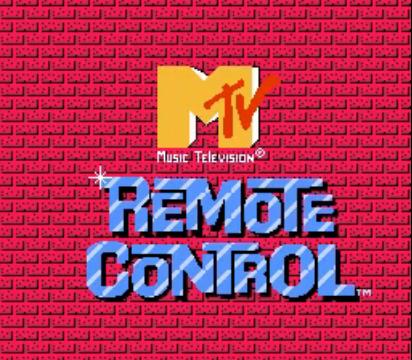
For this week’s “Things That Bring Back Memories” post, I am going to pick something in the topic of “TELEVISION” and go with Remote Control on MTV. This was a show that we all loved before the internet. They asked all kinds of questions about television, music and many other things! You had to actually watch some of the videos on MTV (when they actually played music, back in the day) and then get the answers right. I always loved the big old recliner for the final round at the end. Looked like one that would be prefect to have at home! 🙂 Have you seen it?
For those of you, who are either too young, or just don’t remember it, here’s a video of one of the Remote Control shows:
So, did you ever see the show when you were younger? or have you seen it on TV or the internet later in life? Let me know what you thought of it, and if you have any memories of it in your life!
Who remembers MTV's Remote Control game show from the 80's? Find out more at #TigerStrypesBlog Click To Tweet
More Info on the Remote Control Game Show:
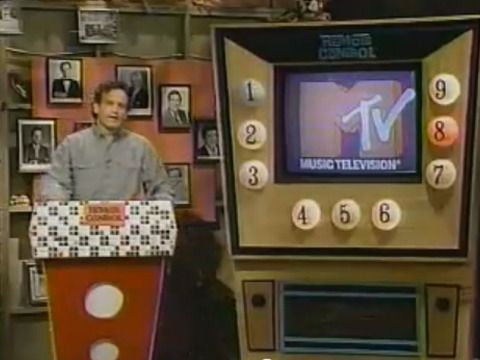 Remote Control is a TV game show that ran on MTV for five seasons from 1987 until 1990. It was MTV’s first original non-musical program. New episodes were made for first-run syndication from 1989 until 1990 which were distributed by Viacom. Three contestants answered trivia questions on movies, music, and television, many of which were presented in skit format.
Remote Control is a TV game show that ran on MTV for five seasons from 1987 until 1990. It was MTV’s first original non-musical program. New episodes were made for first-run syndication from 1989 until 1990 which were distributed by Viacom. Three contestants answered trivia questions on movies, music, and television, many of which were presented in skit format.
The series was developed by producers Joe Davola and Michael Duggan, and directed by Dana Calderwood.Remote Control was hosted by Ken Ober and featured Colin Quinn as the announcer/sidekick. John Ten Eyck played several walk-on parts, joined in later seasons by Adam Sandler, Denis Leary, and Roger Kabler. Steve Treccase provided music; Marisol Massey (Season One), Kari Wührer (Seasons Two and Three), Alicia Coppola (Season Four) and Susan Ashley (Season Five) were the hostesses. Although uncredited, Jani Berry provided the off-camera voice as the character of Ken Ober’s mother.
The show’s premise was that Ober desperately wanted to be a game show host and set up his basement (at 72 Woopingkof Lane; the spelling was indicated by a street sign prop seen on the set) as a television studio. The opening theme song sketched out the scenario:
“Kenny wasn’t like the other kids (Remote Control)
TV mattered, nothing else did (Remote Control)
Girls said yes, but he said no (Remote Control)
Now he’s got his own game show (Remote Control!)”
Shows were sometimes interrupted by the disembodied voice of “Ken’s mother,” and the studio was indeed set up to resemble a basement, complete with a washer and dryer, cheesy bric-a-brac, and a giant Pez dispenser that resembled Bob Eubanks.
The basement was a mainstay of the show throughout its run; however, its cheesy decor was “rearranged” slightly every season. The contestants sat in leather La-Z-Boy recliners with seat belts (their purpose explained below), complete with retro kidney-shaped tables and scoreboards, facing host Ober and his retro-styled Zenith television. Behind Ober were autographed pictures of his idols, game show hosts such as Eubanks, Bob Barker, Bill Cullen, Bert Convy, Monty Hall, and Tom Kennedy.
Musician Steve Treccase set up his keyboard behind a cluttered bar, at which Quinn and the hostess usually sat for the duration of the show. More clutter could be found around and behind the audience, very frequently including props used in previous seasons. Finally, the contestants’ chairs were placed in front of breakaway walls, through which they were pulled if they were eliminated.
Three contestants sitting in lounge chairs would select one of nine channels on a big-screen television that stood behind Ober, using their TV remote control units; each channel represented a subject having to do with pop culture. Sample channels used on the show were “The Bon Jovi Network”, “Brady Physics”, and “Dead or Canadian”. Contestants answered a series of toss-up questions from those subjects to earn points, using signaling devices to ring in. Most channels contained three questions of increasing value, although certain special categories would have either one or two questions. The identity of each channel was only revealed when it was first chosen during a round.
In the first round, the three questions in a standard category were worth 5, 10, and 15 points, in that order. Point values were doubled for the second round. The contestant who answered a question correctly could either stay with the current channel or select a different one; after the last question in a channel was asked, it was taken out of play for the rest of the round.
 At the end of the first round, the contestants were treated to a snack; however, as they were guests of an unconventional host, the snacks were delivered in unusual ways. In the vast majority of shows, the contestants were provided with bowls which they held over their heads to catch the snack, which was dumped onto them from above. When the nature of the snack made this method impractical, it would be lowered from above on trays or delivered by the hostess. In some episodes, each contestant was hit with a pie in the face.
At the end of the first round, the contestants were treated to a snack; however, as they were guests of an unconventional host, the snacks were delivered in unusual ways. In the vast majority of shows, the contestants were provided with bowls which they held over their heads to catch the snack, which was dumped onto them from above. When the nature of the snack made this method impractical, it would be lowered from above on trays or delivered by the hostess. In some episodes, each contestant was hit with a pie in the face.
During the first season, the Snack Break occurred in the middle of the round, and the contestant in the lead at that point had the chance to win a small prize by correctly guessing which of three numbered refrigerators it was located in (similar to Let’s Make a Deal). The other two each held a revolting food item.
One of the signature features of Remote Control was the way in which contestants were eliminated from play. After round two, the TV went “Off the Air” (accompanied by a siren sound effect and the studio lights flashing on and off), and the contestant in last place at that moment was also thrown “Off the Air” and eliminated from the game. Eliminated contestants were removed immediately, chair and all (hence the seat belts). Beginning late in the first season, the audience would also sing a “goodbye song,” typically “Na Na Hey Hey Kiss Him Goodbye,” “Hit the Road Jack,” or “Get Off My Show” (to the tune of “Get Off My Cloud”), while said contestant was being ejected. After a contestant was ejected, he/she would be tormented by stagehands administering various annoyances behind him/her while an unrealistic screaming sound effect played. The ejections were accomplished in a variety of ways.
The setup in the first season was very basic. All three contestants were seated in front of breakaway sections in the wall behind them. Upon elimination, the losing contestant was simply pulled in their chair through that section of the wall, which would fall backwards allowing the chair to continue sliding behind the stage. Upon being pulled through, a black curtain was dropped concealing the contestant. Most of the time this was accompanied by the camera shaking violently and a “static” effect to simulate the TV (and the contestant, as mentioned by Ober) going “Off the Air.” On occasion, the chair would return through the wall with the contestant replaced by a skeleton or something else indicating that he or she had been “killed.”
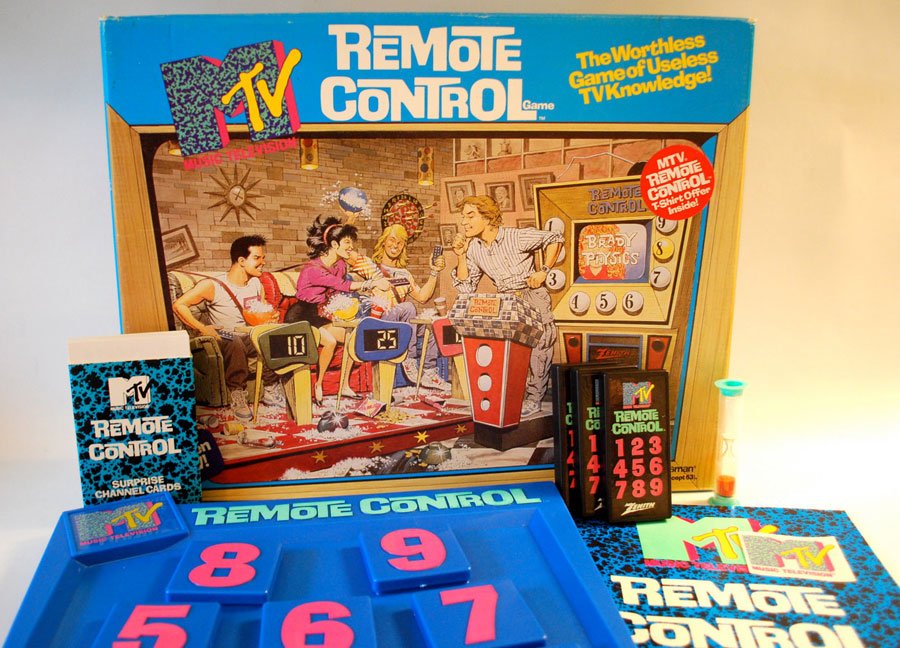 The second season was the first to feature three different kinds of eliminations; also, the camera effects were removed. The contestant on the left side of the stage was seated in front of a seemingly normal brick wall. If they lost, his/her chair was pulled backwards and upon hitting the wall a trap door would swing open to allow the contestant to be pulled backstage. The door was then shut to “trap” the contestant behind the wall. The contestant in the middle was in front of a doorway lined with blue wallpaper. Upon elimination, he would be pulled back and rip through the wallpaper, with a black curtain lowered in front of the contestant to keep him hidden them from view. The contestant on the right was in the infamous “flipper” chair, which was yanked upwards and backwards so that the stage floor was now the wall from the vantage point of the audience.
The second season was the first to feature three different kinds of eliminations; also, the camera effects were removed. The contestant on the left side of the stage was seated in front of a seemingly normal brick wall. If they lost, his/her chair was pulled backwards and upon hitting the wall a trap door would swing open to allow the contestant to be pulled backstage. The door was then shut to “trap” the contestant behind the wall. The contestant in the middle was in front of a doorway lined with blue wallpaper. Upon elimination, he would be pulled back and rip through the wallpaper, with a black curtain lowered in front of the contestant to keep him hidden them from view. The contestant on the right was in the infamous “flipper” chair, which was yanked upwards and backwards so that the stage floor was now the wall from the vantage point of the audience.
Seasons 3 and 4 presented some minor modifications. The “flipper” chair was now on the left side of the stage. The middle chair was in front of a fake brick wall which had a breakaway section similar to the ones used during the first season. Just like in prior seasons, a black sheet was dropped down to conceal the contestant from view. The contestant on the right side was in front of a typical looking wall decorated with shelves, pictures, and a dartboard. When this contestant lost, his/her chair would be flung backwards, hitting the wall and spinning it around 180 degrees. The backside of the wall (now seen on stage) looked like the outside of a house, with siding and a garden hose (as to imply that the contestant had been ejected from the basement to outside.)
The fifth and final season presented some minor modifications as well; the black curtain behind the breakaway wall was replaced with a black wall with “jail bars,” and the wall rotated vertically as the contestant on the right side was being pulled through it.
In Spring Break episodes, contestants were seated in folding lawn chairs which were placed on platforms on the edge of a swimming pool. All three contestants were eliminated in the same manner if they went “Off the Air.” The platform would sink forward slightly, folding up the lawn chair just a little (and making it more difficult for contestants to run away if they chickened out, as they were not strapped in for safety purposes.) The hostess would then walk over to a lever in front of the contestant, wave bye-bye to them and pull the lever that released the platform, sending the seated contestant tumbling backwards into the pool. This concept was dropped in later Spring Break episodes and replaced with the losers being pushed or thrown into the pool by stagehands.
On at least two occasions (including a 1988 Christmas episode in which the three contestants were actors playing the “Three Wise Men”), the contestants performed so badly in Round 1 that Ober decided to have them all yanked “Off the Air” at the end of it. The scores were reset to zero, and three new contestants took their places to complete the game.
For the “Grand Prize” round, the contestant was strapped to a “Craftmatic Adjustable Bed”, facing a wall of nine TV sets (some turned sideways or upside down) on which music videos would be playing. The contestant had to identify the artist in each video, with a prize being awarded for every correct answer. Correctly identifying all nine artists within 30 seconds won the grand prize, usually a car or a trip ($5,000 in celebrity episodes). Before the clock started ticking, the contestant was given a split-second glimpse of every video at once.
Some of the Remote Control Cast:
Ken Ober (Host) was born July 3, 1957 in in Brookline, Massachusetts. His first job was as a bagger at a local Jewish supermarket. Ober hosted  four game shows over the course of his career. He received his break after appearing as a contestant on Star Search in 1984. He was most widely known for his role on the MTV game show Remote Control, which he hosted for three seasons, spanning 1987 to 1990, then in reruns for an additional two years. That show also helped launch the careers of Adam Sandler, Denis Leary, Kari Wührer, and Colin Quinn. In 2002, Ober served as supervising producer for Colin Quinn’s Tough Crowd with Colin Quinn, which was a reunion of sorts; Quinn was the announcer on Remote Control. Ober was also a guest on one episode.
four game shows over the course of his career. He received his break after appearing as a contestant on Star Search in 1984. He was most widely known for his role on the MTV game show Remote Control, which he hosted for three seasons, spanning 1987 to 1990, then in reruns for an additional two years. That show also helped launch the careers of Adam Sandler, Denis Leary, Kari Wührer, and Colin Quinn. In 2002, Ober served as supervising producer for Colin Quinn’s Tough Crowd with Colin Quinn, which was a reunion of sorts; Quinn was the announcer on Remote Control. Ober was also a guest on one episode.
Ober starred in the Blues Traveler video for the song “Hook”. He also had a smaller role in the same band’s videos for “Run-Around” and “The Mountains Win Again”. He served as a producer for the CBS comedy The New Adventures of Old Christine, and is also known for a series of Jenga commercials. He was an original member of the Theta Mu chapter of the Pi Kappa Alpha International Fraternity at the University of Massachusetts Amherst. He graduated in 1980. Ober died at his home in Santa Monica on November 15, 2009, at the age of 52. According to friends, Ober had been feeling ill and was complaining of headaches, chronic chest pain, and flu-like symptoms the previous afternoon.
 Colin Quinn (Co-Host) was born June 6, 1959, and is an American stand-up comedian, actor, and writer. On television, he is best known for his work on Saturday Night Live, where he anchored Weekend Update, on MTV’s 1980’s game show Remote Control, where he served as the announcer/sidekick, and as host of Comedy Central’s late-night panel show Tough Crowd with Colin Quinn.
Colin Quinn (Co-Host) was born June 6, 1959, and is an American stand-up comedian, actor, and writer. On television, he is best known for his work on Saturday Night Live, where he anchored Weekend Update, on MTV’s 1980’s game show Remote Control, where he served as the announcer/sidekick, and as host of Comedy Central’s late-night panel show Tough Crowd with Colin Quinn.
Notable film work includes his role as Dickey Bailey in the Grown Ups films and playing Amy Schumer’s father in the film Trainwreck. Quinn has also become known for his comedic one-man shows that offer his unique takes on history and growing up in New York City. As of 2015, he has written and starred in five shows: Irish Wake, My Two Cents, Long Story Short, Unconstitutional, and The New York Story, two of which he collaborated on with Jerry Seinfeld as director. Long Story Short was also filmed as an HBO special that aired on April 9, 2011 and Unconstitutional was released as a Netflix special in 2015.
Kari Wuhrer (Co-Host) was born April 28, 1967 in Brookfield, CT. She is an American actress and singer. As a teenager, she sang in nightclubs,  sneaking out of the family home to perform. She studied acting from the age of 13 at the Wooster School. She studied drama at New York University’s Tisch School of the Arts, Marymount Manhattan College, Columbia University, and the Royal Academy of Dramatic Arts. Wuhrer is best known for her roles as Maggie Beckett in the television series Sliders and as Sheriff Samantha Parker in the comedy film Eight Legged Freaks. Wuhrer’s first television break was MTV’s Remote Control (1987).
sneaking out of the family home to perform. She studied acting from the age of 13 at the Wooster School. She studied drama at New York University’s Tisch School of the Arts, Marymount Manhattan College, Columbia University, and the Royal Academy of Dramatic Arts. Wuhrer is best known for her roles as Maggie Beckett in the television series Sliders and as Sheriff Samantha Parker in the comedy film Eight Legged Freaks. Wuhrer’s first television break was MTV’s Remote Control (1987).
She was a regular cast member of the television series Swamp Thing from 1991 to 1992. She also worked as a VJ on MTV during the same period. In 1993, she was a regular in the TV series Class of ’96, where she played college student Robin Farr. From 1994 to 1995, she starred as Ariel Hunter in the long-running prime-time soap opera Beverly Hills, 90210. From February 3, 2005 through November 2005, Wuhrer joined the cast of the daytime soap opera General Hospital as FBI Agent Reese Marshall, the former love interest of mobster Sonny Corinthos and former best friend/rival of Carly Corinthos. Wuhrer’s character died after suffering injuries in a train wreck. In January 2006, Wuhrer announced that she was suing General Hospital, claiming that she was fired because of her pregnancy. The case was resolved in December 2006.
Remote Control – Did You Know?
- A board game based on the show was released by Pressman in 1989.
- In 1990, a video game based on Remote Control was licensed for multiple platforms, including the Nintendo Entertainment System in 1990 and the Apple IIGS in 1989. The video games were published by Hi-Tech Expressions. The game remained quite similar to the show, although the NES version has no endgame.
- The show launched the comedy career of Adam Sandler.
- LL Cool J, Julie Brown, and “Weird Al” Yankovic played for charity during the second season, with Yankovic winning.
Thanks for stopping by today. Please be sure to leave a comment, if this show meant something to you, too. Or to just let me know what you think of the story in this post! TigerStrypes claims no credit for any images used on this post, unless otherwise noted. Images in this post are copyright to their respectful owners. If there is an image appearing on this blog that belongs to you and do not wish for it appear on this site, please email us with a link to said image and it will be promptly removed. Thanks and have a great day!!


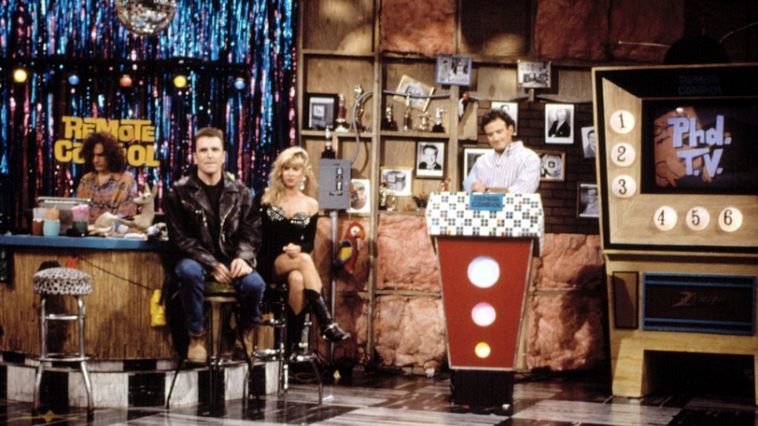

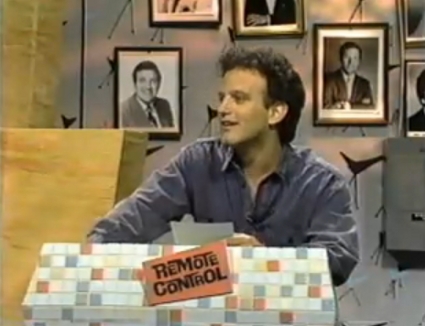
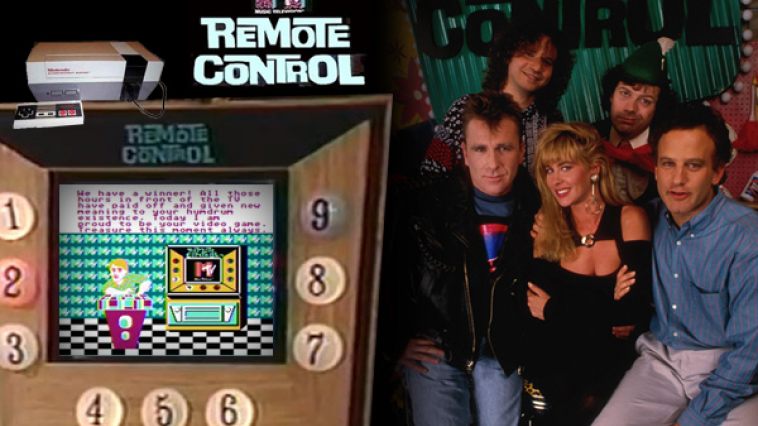
What a fun post. I haven’t thought of this in years!
It’s definitely one that everyone loved when you only had a few channels! 🙂
I dont remember this show. i was not into MTV back then
It was a fun show to watch, not like some that are on there now. 🙁